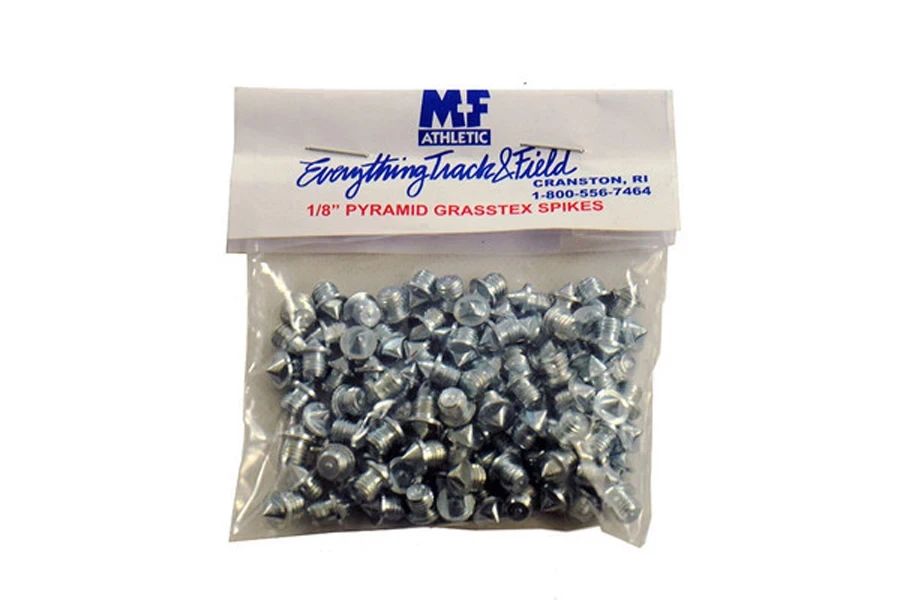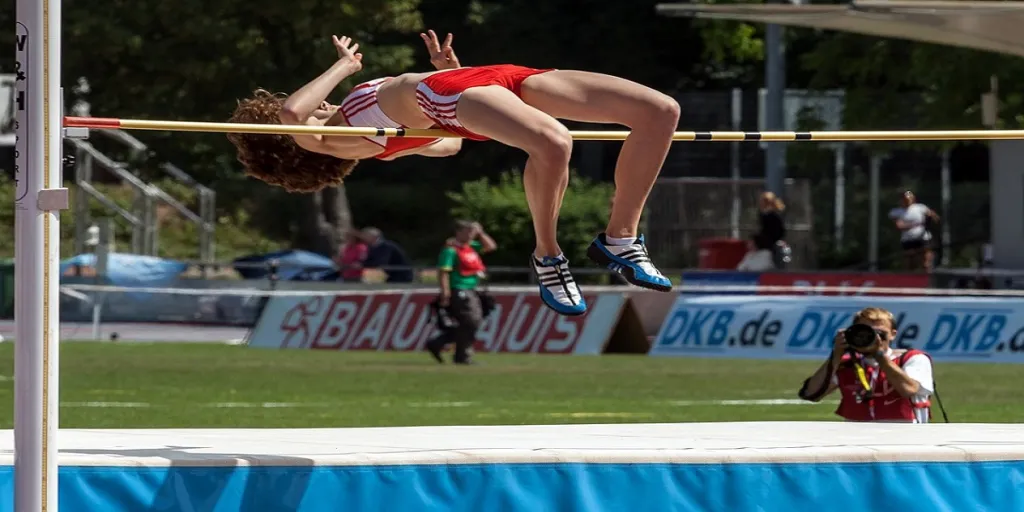High jump is a thrilling sport. Athletes build momentum before leaping into the air and clearing obstacles to achieve breathtaking records. But like every other sport, consumers must train to develop their jumping skills and techniques to a professional level.
However, these athletes can’t enjoy a fulfilling training experience without the right tools. Thankfully, that’s where businesses can make more sales—by targeting these consumers with the right training equipment! So, what kind of equipment would these athletes need? Keep reading to find five high jump sports training equipment businesses can profit from in 2024.
Table of Contents
High jump sports: 5 training equipment athletes need in 2024
Wrapping up
High jump sports: 5 training equipment athletes need in 2024
1. High jump crossbars
Athletes can’t train their high jump skills without crossbars. This equipment serves as an elected bar, setting the height athletes must clear for a successful performance or training session. Manufacturers typically make them from lightweight materials, like fiberglass or aluminum, making them easy to move and set up.
Additionally, consumers can easily adjust these crossbars, accommodating various skill levels and competition standards. More importantly, crossbar dimensions vary depending on the trainees’ level of competition. If they’re professional high jumpers, they’ll need crossbars approximately 4 meters long with a 30-millimeter diameter.
On the other hand, novice jumpers (like youth and school settings) will need crossbar lengths reduced to 3 meters with a smaller diameter, often ranging from 25 to 28 millimeters. These novice crossbars will also have a narrower width, making jumps less challenging. Crossbars are also on-trend. They had an impressive performance in January 2024, totaling 27,100 searches (based on Google data).
2. High jump pits and shelters
These components are crucial for any high jump event, whether competitive or training. They ensure athlete safety while providing a designated area for jump attempts. Since they’re more like structures, jump pits are not very popular. Regardless, they’ve attracted 350 searches in January 2024. Despite its low popularity, this high jump gear has several elements that cushion and protect athletes during their jumps. Here’s a closer look at each of them.
Landing mat
Landing mats are the central part of the high jump pit. Typically, manufacturers make them from foam or a combination of foam and air-filled chambers, creating a soft and shock-absorbing surface. Even better, these mats help minimize the landing impact on athletes after clearing the bar or during trial-and-error sessions. Although the foam’s thickness and density vary, manufacturers design them to meet specific safety standards.
Base
While landing mats cushion the athlete’s fall, a sturdy base gives them the necessary support to handle the momentum. These bases often come from reinforced vinyl or other durable materials, which helps maintain the landing area’s shape and integrity—an unstable landing surface would be bad for everyone.
Weather shelter
In outdoor high jump training, weather shelters are necessary for protecting athletes and coaches from adverse weather conditions. Often made of durable and weather-resistant materials, these shelters provide a covered space for athletes to wait between attempts and for coaches to handle the training comfortably.
3. High jump standards
High jump standards are essential for anyone looking to hone their jumping skills. They provide the framework for supporting the crossbar at various heights during training sessions. Consumers can get high jump standards in metal, aluminum, or steel—they are the best materials for maximum durability and stability. Nevertheless, trainees choose these materials based on weight, strength, and weather resistance.
One of the key features of high jump standards is their height adjustment mechanism. It allows athletes to make easy and precise changes to their crossbar height, ensuring it matches their capabilities. Usually, the mechanism involves different holes and pins along the standard’s sides.
With high jump standards, athletes can raise the crossbar to higher levels or reduce it if it’s too challenging during practice. Plus, high jump standards have experienced a steady increase in popularity. According to Google data, they rounded up January 2024 with 1,900 searches, a 60% increase from 1,000 in 2023.
4. Replacement spikes

While athletes definitely pull off jumps based on their skill, their shoes go a long way in assisting them. That’s why replacement spikes are also among the necessary training equipment—they have also gotten 1,300 searches in January 2024 (based on Google data).
But what are these replacement spikes? They help athletes customize and optimize their high jump footwear for different track and field conditions. These shoe mods offer various lengths, allowing athletes to choose based on their preferences and training track surfaces. While shorter spikes provide better traction on harder surfaces, longer spikes are the go-to for softer or muddy tracks.
But there’s more. High jump spikes also offer different designs (pyramid or conical shapes). However, both design styles aim to provide improved grip and stability. With these unique shapes (reminiscent of soccer cleats), athletes can maintain traction during the approach run and takeoff.
More importantly, replacement spikes come with different thread types to fit various track shoes. The most common thread types include pyramid, needle, and Christmas tree designs. So, compatibility is a must! Note: Manufacturers make replacement spikes from lightweight and durable materials (stainless steel and hardened plastics are top choices).
5. Approach runway and take-off boards

High jump requires athletes to build momentum and launch over crossbars with amazing agility. However, athletes can’t train their technique without approaching runways and take-off boards. Approach runways for training must match the ones for competitions. So, while consumers can use various lengths, they’ll most likely stick to the standard 40 to 45 meters.
Additionally, training runways must have the same markings as standard ones to guide athletes during their approach. These markings are mostly lane lines, as they’re the go-to for getting the best take-off position. Approach runaways should also have textured patterns to reduce slipping chances and ensure secure footing when building momentum.
On the other hand, take-off boards are rectangular pieces made from wood or composite material. Consumers can place them at the end of their runway to serve as an official take-off point. The best part is that take-off boards are adjustable! That way, athletes can easily customize their placement to take off from their preferred point. While approach runways got 90 searches in January 2024, take-off boards garnered 880 queries.
Wrapping up
Striking the perfect pose and launching at the right speed require practice. Athletes have to train and tone their bodies to get that one perfect jump in international or local competitions.
The best way to prepare for such events is to use equipment to stimulate the experience. This training gear must be as close to the standard as possible, so athletes don’t feel less familiar with the tracks when competing. If there are sellers planning on entering the high jump sports market, they should be ready to invest in crossbars, standards, landing pits/shelters, replaceable spikes, and approach runaways/take-off pads. These are the best bets to attract consumers in 2024.




